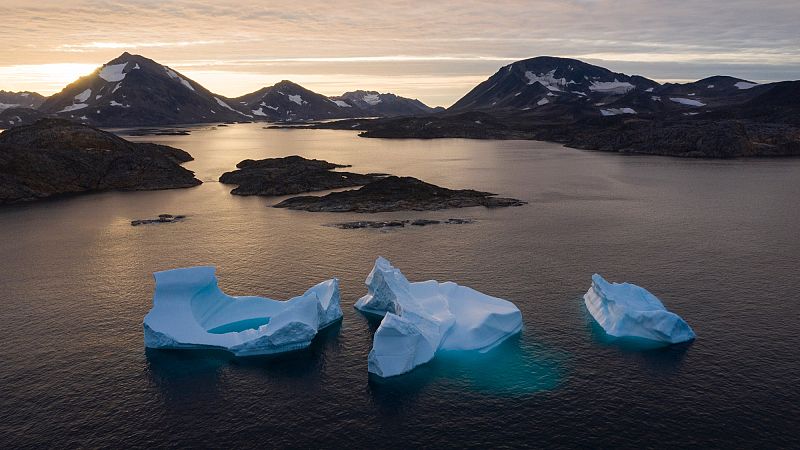
As climate change hits the Arctic with accelerating speed, Greenland is “shrinking” in size.
New research from DTU Space, published in the Journal of Geophysical Research: Solid Earth, says the Danish territory is being “twisted, compressed and stretched” while also slowly drifting northwest.
The phenomenon is occurring due to plate tectonics and movements in the bedrock, which is caused by the large ice sheets on top melting and “reducing pressure on the subsurface”.
Greenland ‘shifting’ northwest
Researchers say these movements are making Greenland expand and contract horizontally, meaning some regions are being “stretched out” and getting larger, while other parts are being “pulled together”.
DTU Space researcher and lead author Danjal Longfors Berg says overall this means Greenland is getting smaller - but this could change in the future with the “accelerating melt we’re seeing now”.
The study, which produced measurements based on 58 GNSS stations around Greenland, also found that the entire island has moved northwest over the past two decades by about 2 centimetres each year.
Is climate change to blame?
The researchers say pressure is easing due to large amounts of ice that have melted in Greenland over recent years as a result of climate change.
In 2024, the Greenland Ice Sheet (which formed around three million years ago) lost 55 + 35 Gigatons of mass.
While this was the lowest annual ice loss since 2013, it marks the 28th year in a row where Greenland has lost more ice than it produces and poses a serious threat to human and natural environments across the globe.
The Greenland Ice Sheet is one of the planet’s biggest freshwater resources, and contains the equivalent of 7.4 metres of global sea rise.
According to Copernicus, every centimetre ofsea level riserisks around six million people around the planet being exposed to coastal flooding.
However, the bedrock is also being affected by the “enormous” ice masses that have melted since the peak of the last Ice Age around 20,000 years ago.
"The ice that has melted in recent decades has pushed Greenland outward and caused uplift, so the area has actually become larger during this period,” Berg adds.
“At the same time, we see movement in the opposite direction, where Greenland is rising and contracting due to prehistoric changes in the ice masses related to the last Ice Age and its end.”







